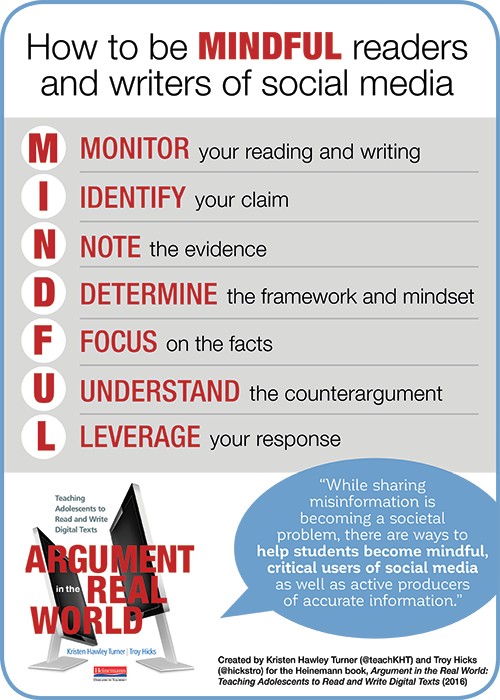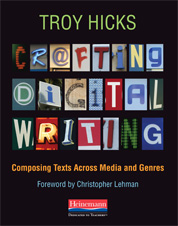As it always does, summer continues to slip by in a blurry mix of vacation days, professional development days, and some that are a little of both. Last week, we hosted our 2012 CRWP Open Institute, and the week before I partnered with another CMU professor, Tim Hall, to lead a three-day session connected with the Teaching American History Grant Year 4: America in Revolution and Conflict. Before the workshop becomes, well, history in my own memory, I wanted to recreate some of the planning that led up to the event, as well as my thinking over the three days as we co-facilitated the workshop.
As it always does, summer continues to slip by in a blurry mix of vacation days, professional development days, and some that are a little of both. Last week, we hosted our 2012 CRWP Open Institute, and the week before I partnered with another CMU professor, Tim Hall, to lead a three-day session connected with the Teaching American History Grant Year 4: America in Revolution and Conflict. Before the workshop becomes, well, history in my own memory, I wanted to recreate some of the planning that led up to the event, as well as my thinking over the three days as we co-facilitated the workshop.
Workshop Planning
When Tim and his ISD partner, Beckie Bush, contacted me about the possibility of co-facilitating the workshop, I was immediately interested given my obvious work with teaching writing in the broadest sense, as well as teaching writing in the disciplines. Together, we agreed that we would use two professional texts for the workshop, aimed at inspiring both historical thinking and a better understanding of argument writing.
Beckie and Tim asked me to bring a focus on argument writing, with the clear goal of integrating credible, web-based sources and, to the extent possible, digital writing with multimedia tools beyond slideware. When we first met, we immediately began
constructing a working agenda via a wiki, and I knew that
Zotero would be a key component of our teaching and learning. While somewhat fearful that the topic would be one that teachers would find mundane, Tim helped guide us through thinking about Truman’s decision to drop the bomb as a time-period appropriate dilemma that we could use to teach historical empathy and argumentative writing.
Thus, we decided on two main tasks for the teachers to complete over the three days by engaging in a digital writing workshop that would involve lots of research, collaboration, and development of both a
written individual essay and a
group multimedia presentation from one of three perspectives: Truman’s advisors who supported the bomb, those in his cabinet who were against it, and the scientific community. As Tim led the group through many exercises on historical thinking, DBQ (document-based questioning), and historical empathy, I took the lead on teaching the argument writing.
Day 1
During this day, my primary role was to begin a discussion about the similarities and differences between persuasion and argumentation. With resources from Smekens Education Solutions, and our crowdsourced Google Docs, we began thinking about the subtle differences that teachers will have to make as we move away from teaching “persuasion,” (with its strong reliance on rhetorical appeals and one-sided arguments) and “argument,” (which requires the writer to acknowledge both sides and use reason to support a claim).
| Argumentation |
Persuasion |
- Opinion
- Facts and Statistics (Both Sides)
- Support
- Position
- Stance
- Evidence
- Interpret
- Refute
- Debate
- Validity
- Agreement/Disagreement
- Persuade
- Conflict
- Details
- Validate
- Information
- Balanced
- Attitude
- Acknowledgement
- Grapple
- Issue
- Problem
- Logic
- Reasoning
|
- #@!%*&? (Cursing or strong language to get a point across)
- Position
- Support
- Emotion
- Passion
- One-Sided
- Propaganda
- Advertising
- Facts and data
- Spin
- Influence
- Appeal
- Aggresive
- Credible
- #winning
- LOCK
- Loaded Words
- Overstatements
- Carefully Chosen Facts
- Key Omissions
|
These will be big shifts in the years to come as we implement the CCSS, and I relied on a number of resources to guide us through our thinking about how to create an argumentative essay including Hillocks’ book, the NWP Writing Assignment Framework and Overview, the ReadWriteThink Persuasion Map, a small sample of They Say/I Say Templates, and the Purdue Online Writing Lab’s List of Transitional Words.
Also, on this first day, we talked about how the essay (written from your personal perspective in 2012) would differ from the group multimedia project, meant to be delivered as a factual report to a (fictitious) Congressional inquiry in 1950, built only from evidence available at that time, most of which came from the Truman Library. This was quite interesting, as it forced us to take two different approaches:
|
Individual Essay |
Group Mulitmedia Presentation |
| Mode |
Argumentative essay (reliant on logical reasoning and multiple forms of evidence from WWII-present) |
Persuasive presentation (reliant on logic, but also emotional appeals of the era; most evidence was textual, with some images and film footage) |
| Media |
Composed in Word or Google Docs, with use of Zotero |
Composed with a multimedia tool such as Prezi or Capzles |
| Audience |
Peers, teachers, general public (op-ed) |
Peers and teachers, set in roles at a fictitious Congressional Hearing in 1950 |
| Purpose |
To create a coherent, sequenced argument for or against the dropping of the bomb based on its short and long-term consequences |
To create a well-reasoned, yet impassioned case for one of three positions about dropping the bomb |
| Situation |
Situated in the present, and with historical knowledge from dropping of the bomb, through Cold War, up to present |
Situated in the past, without knowledge of historical effects beyond 1950.Using the media of today to make a presentation for that era. |
Day 2
 My notes here on day two are brief because, for the most part, it was a work day. Lots of trouble-shooting with Zotero as people got their accounts synced up with the web plugin and standalone, connected to our group library, and worked on their multimedia presentations. There were many, many quick conversations with teachers about the affordances and constraints of the technologies — as well as many frustrations — but by the end of the day most of them felt pretty good about the work we were doing. Also, I worked with them to do a “think aloud” of my first draft of my attempt at the individual essay (look at revision history for Jun 20, 1:42 PM). This brought up interesting conversations about the trap of writing though a lens of “presentism,” the use of “I” in writing for history class, and how to best use the They Say/I Say templates and transition words as a way to get started (note the highlights).
My notes here on day two are brief because, for the most part, it was a work day. Lots of trouble-shooting with Zotero as people got their accounts synced up with the web plugin and standalone, connected to our group library, and worked on their multimedia presentations. There were many, many quick conversations with teachers about the affordances and constraints of the technologies — as well as many frustrations — but by the end of the day most of them felt pretty good about the work we were doing. Also, I worked with them to do a “think aloud” of my first draft of my attempt at the individual essay (look at revision history for Jun 20, 1:42 PM). This brought up interesting conversations about the trap of writing though a lens of “presentism,” the use of “I” in writing for history class, and how to best use the They Say/I Say templates and transition words as a way to get started (note the highlights).
Day 3
 Moving into the morning of day three, we talked about ways to effectively integrate peer response groups and did a “fishbowl” model with my essay. Again, this yielded some interesting results as this group of history teachers worked with me to think about what was valuable in terms of both historical thinking and the quality of writing.
Moving into the morning of day three, we talked about ways to effectively integrate peer response groups and did a “fishbowl” model with my essay. Again, this yielded some interesting results as this group of history teachers worked with me to think about what was valuable in terms of both historical thinking and the quality of writing.
We looked at an online rubric generator as a way to keep our conversation focused on assessment, and also discussed the “checklist” type of criteria (Five transitional words/phrases; Three “template” transitions from They Say/I Say) as compared to the parts of the essay that could be judged in a more evaluative sense:
- State a clear claim and back it with appropriate evidence, from the WWII era through today
- Develop three main talking points (diplomatic, social, military, political, economic), with two or three sub-points (specific example)
- Identify and rebut at least two significant counter-arguments
In all of this, we talked about what counts as “evidence,” and many elements were listed including political cartoons, as this screen shot from my “final” essay shows. Also, we discussed the fact that we have to be open to sharing our rough draft thinking with students, even though (by nature) most teachers are perfectionists. One participant noted that if I, as an English professor, was willing to share my writing in this way and not just try to impress the crowd with an amazing essay on the first attempt, then they as middle and high school history teachers should be willing to do the same. I heartily agree.
Then, we moved into the last part of the workshop where groups presented their cases to the “Congressional Hearing.” We tried to complete a speaking and listening guide, as well as some work with Bernajean Porter’s Digitales Multimedia Evaluation Guides, but I have to say that we mostly just enjoyed the presentations. There were, of course, some creative dramatics involved, and here are a few of their results.
Reflections
Much of what I have to say about this entire workshop can be summarized in the simple, yet powerful mantra from NWP in that teachers must be writers. When I asked them at the end how they felt about the process, they wouldn’t want to do the group work and the individual essay at the same time. Many felt overloaded, both with tasks and technology. So, there is some tweaking to do. But, some of their final thoughts we captured in conversation were useful:
- What else would you, as social studies teachers, be looking for in the writing?
- Background information about the topic: era, people, place (set the stage)
- Historical thinking gurus: one of the advantages of this approach as a process of thinking is that it gives students a chance to apply what they have learned and then they are able to do something with it
- Defining key terms/vocabulary
- Key/relevant statistics/data
- Citations: analyzing primary and secondary sources
- Gathering data from their classmates/community
- Cause and effect, sequential, compare and contrast
And, with that, I will put this particular PD experience in my own history, at least for now, until I have another opportunity to do a workshop on argumentative writing, when all of this will come in quite handy.

This work is licensed under a Creative Commons Attribution-NonCommercial-ShareAlike 3.0 Unported License.
Like this:
Like Loading...
 Please enjoy my most recent post, “From Wonder to Writing: Invite Students Into Inquiry Through Online Articles” on the EdCollab blog.
Please enjoy my most recent post, “From Wonder to Writing: Invite Students Into Inquiry Through Online Articles” on the EdCollab blog.










